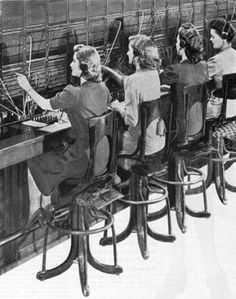Telephone Industry Transformation – Switchboard to Dial!

This morning, I spent a while watching some old videos about transformation in the telephone industry.  Way back before my time, the growing telephone network depended on thousands of young women working as telephone operators (boys didn’t work out so well).
The need for telephone operators was so great that AT&T produced a movie “Operator!†to describe the wonderful opportunity for a career as a telephone switchboard operator!
Â
However, as demand for telephone service boomed, someone estimated that it would soon take all the young women in the nation to work as telephone operators! Â The solution – self-dialed telephones. it soon turned out that everyone who used a telephone became his or her own telephone operator!
But apparently, using a dial telephone was difficult enough that ever-so-scintillating training movies were produced …
Just think — most of today’s young people don’t know how to operation a dial telephone! A lost art indeed!


